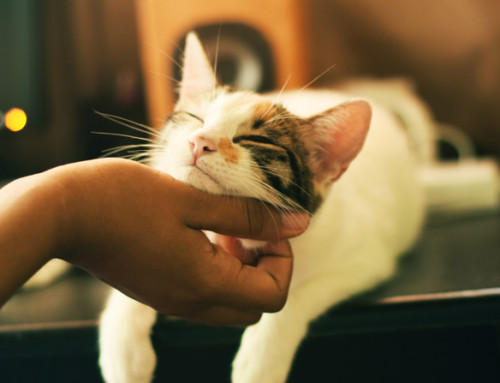Like all insurance, pet insurance is there for the unexpected event. As such things that are predictable or optional may be excluded.
For example, pregnancy, as well as elective treatments such as de-sexing, micro-chipping and cosmetic surgery are generally not covered by standard insurance, although small amounts may be recoverable when you opt for Wellness (or Routine) Care with your policy.
Most policies will not cover pre-existing conditions, including those that develop during the waiting period (for example the waiting period for cruciate conditions is 6 months with Petsecure, but this can be waived if your vet can certify that no cruciate conditions exist when you join). Also, pets must be fully vaccinated, and generally any condition that can be avoided through vaccination is not covered (for example Kennel Cough).
Pre Existing Conditions
To help pet parents get the most from their pet insurance policies, we’ve recently made some changes to how pre-existing conditions are handled for all Pet Secure pet insurance policies. This applies to claims with a veterinary treatment date from 1 December 2020.
What is a pre-existing condition?
A pre-existing condition refers to any health condition (diagnosed or otherwise) that your pet has shown signs of before the purchase of a pet insurance policy (or its applicable waiting period), meaning the condition will not be covered under the policy.
What’s changed?
Not all pre-existing conditions are created equal. To help pet parents claim for more eligible conditions, from 1 December 2020 pre-existing conditions will be assessed depending on whether they are considered a temporary or a chronic condition.
A temporary pre-existing condition is a pet health condition that usually resolves with treatment and is removed from your policy as an exclusion automatically if your pet hasn’t shown signs of that condition for 18 months or more prior to your claim treatment date.
A chronic pre-existing condition is a pet health condition that requires ongoing care or is more prolonged in nature, so if your pet displays one of these conditions prior to the purchase of a pet insurance policy or its waiting period, it will never be coverable under the policy.
Some of these conditions include:
- Cruciate ligament conditions
- Intervertebral disc disease
- Hip dysplasia
- Elbow dysplasia
- Patella luxation
- Endocrine diseases
- Any other chronic condition
An important reminder that these exclusions only relate to pre-existing conditions.
If your pet requires treatment after the purchase of a pet insurance policy and its waiting period, all conditions outlined in the policy’s Product Disclosure Statement will be eligible for cover for the life of the policy.
Let’s take a quick look at some examples to help differentiate the difference between a temporary pre-existing condition (which can be removed as an exclusion after the 18 month asymptomatic period), and a chronic pre-existing condition (which will always be excluded if pre-existing).
Bella’s Gastroenteritis
Before taking out a pet insurance policy, your pet Bella has a case of Gastroenteritis (a tummy upset). The condition is treated and Bella recovers. Following the surprise episode, you decide to purchase a pet insurance policy for Bella to help with future, unexpected Vet visits.
Two years later, Bella has another unrelated case of Gastroenteritis. Can you claim for this condition?
Yes! The Gastroenteritis is considered a temporary condition, given that it resolved with treatment, it’s not on the list of excluded conditions in the policy’s Product Disclosure Statement (PDS) and the two episodes were not related. There was also more than 18 months between each condition.
Archie’s Luxating Patella
You’ve noticed your pet Archie is limping a little on his rear leg. Your Vet diagnoses him with a Luxating Patella (a dislocating kneecap).
15 days ago, you took out pet insurance for Archie, meaning you’re currently mid-way through the policy’s waiting period for this condition. That means treatment for this condition is not covered by your policy given it arose during the applicable waiting period, as outlined in the policy’s Product Disclosure Statement (PDS).
Two years later, Archie requires surgery for the Patella Luxation. Can you claim for this condition?
No. You and your Vet were both aware of this condition during the pet insurance policy’s waiting period, so it’s not eligible for cover (as outlined in the policy’s PDS). Patella Luxation is also defined as a chronic condition in the policy’s PDS, so as a result it remains ineligible for cover two years later.
Max’s Demodex Mites
Your puppy Max had Demodex Mites 18 months before having a pet insurance policy, which resolved with treatment from your Vet.
Two years later, Max is diagnosed with a new case of Demodex Mites. Can you claim for this condition?
Yes! The first episode of demodex mites was a temporary condition that resolved with treatment, and it’s not considered an excluded condition in the policy’s Product Disclosure Statement (PDS). Max also didn’t show signs, symptoms or abnormality in relation to the condition for more than 18 months.
Daisy’s broken leg
You first got pet insurance for Daisy when she was just 10 weeks old. Now at age three, Daisy broke her leg, and needs emergency treatment by your Vet. Can you claim for this condition?
Yes! As your selected pet insurance policy provides cover for accidents like broken bones (as outlined in your Product Disclosure Statement (PDS)) and the policy’s waiting period has passed, the condition isn’t considered pre-existing (i.e. known to you or your Vet prior to the commencement of your policy), and you’ve renewed your policy continuously each year without a break in cover, you’re able to claim for Daisy’s broken leg.
Want a pre-existing condition reviewed on your policy?
All temporary pre-existing conditions are automatically removed from your pet insurance policy as an exclusion if your pet hasn’t shown signs or symptoms of that condition for 18 months or more, so there’s nothing more for you to do.
A chronic pre-existing condition is a pet health condition that requires ongoing care or is more prolonged in nature, so if your pet displays one of these conditions prior to the purchase of a pet insurance policy or its’ waiting period, it will never be coverable under the policy.
If you would still like to have a pre-existing condition on your pet insurance policy reviewed, you can do so anytime. Simply complete the pre-existing condition policy review form found here ,with your Vet and we’ll take care of the rest.
With Petsecure hereditary and congenital conditions are covered providing there is no sign of them before the cover commenced, but this may not be the case with all pet insurance policies. With some policies tick paralysis is not covered at all. With Petsecure there is a maximum benefit payable of $500 for tick paralysis under the Accident and Illness cover option.
With Petsecure the premiums are based on the age and breed of the pet, and you can choose whether you want to have a 75% or 85% benefit payment, with no extra excess to be paid when you claim. Some other policies offered in Australia may have a higher benefit payment, but then also have an excess that is paid for each claim.
This is not intended to be a comprehensive list of exclusions, but just gives an idea of what to look out for when choosing your pet insurance. Whichever policy you choose, you should be sure to read the Product Disclosure Statement so that you fully understand the terms and conditions and the exclusions before you make your decision.
One of the biggest mistakes people make with Pet Insurance is to leave it too late. Many of us don’t think about insurance until our pet is already sick, and then it is really too late.
Whilst pet insurance for some may seem like a luxury it’s important to consider the bigger picture. With premiums averaging around $600 per year you would spend around $6,000 over the lifetime of the pet – and vet treatment for just one injury and on-going care for an illness can easily come to that, and more.
This is not advice, and does not take account of your individual circumstances. Please read the product disclosure statement about the product you are considering before making any decision to purchase pet insurance.







Leave A Comment